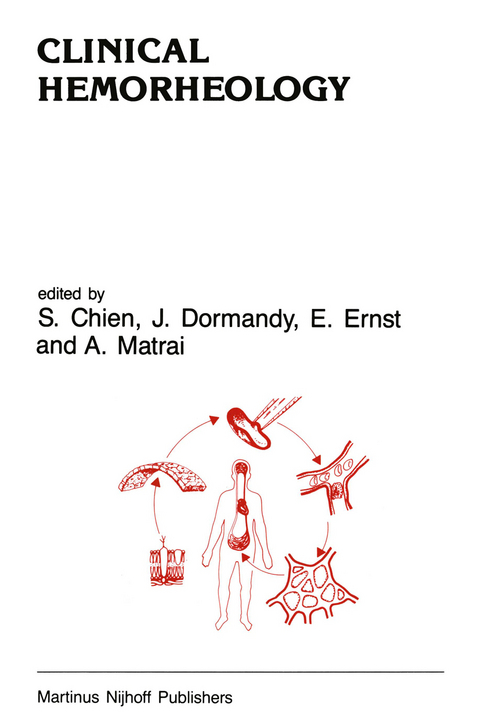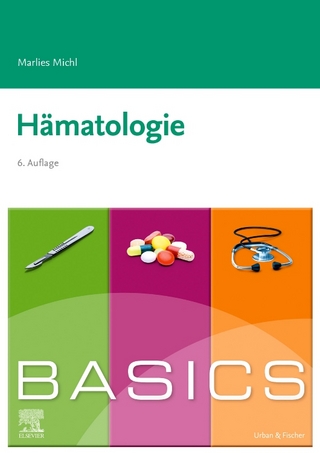
Clinical Hemorheology
Springer (Verlag)
978-94-010-8404-8 (ISBN)
1. Introduction: On the way to modern clinical hemorheology.- 2. Biophysics.- 2.1. Basic concepts.- 2.2. Viscometry.- 2.3. Other techniques quantifying blood rheology.- 2.4. Rheology of normal blood.- 2.5. Blood sampling and handling in hemorheological tests.- 2.6. Clinical interpretation of hemorheological data.- 2.7. References.- 3. Rheology of blood cells.- 3.1. Introduction.- 3.2. Dynamic deformability of blood cells.- 3.3. Rheological implications of blood cell deformabilities.- 3.4. Blood cell aggregation - disaggregation and interaction with vascular endothelium.- 3.5. Acknowledgements.- 3.6. References.- 4. Structural, hemodynamic and rheological characteristics of blood flow in the circulation.- 4.1. Introduction.- 4.2. Structural and hemodynamic characteristics of the vascular system.- 4.3. Functional compartments within the vascular system.- 4.4. Blood cell rheology in the circulation.- 4.5. Summary and conclusions.- 4.6. References.- 5. Physiological and pathophysiological significance of hemorheology.- 5.1. The role of hemorheology in circulatory physiology.- 5.2. Circulatory consequences of pathological alterations in blood rheology.- 5.3. Summary and conclusions.- References.- 6. Cardiovascular diseases.- 6.1. Introduction.- 6.2. Myocardial ischemia.- 6.3. Hypertension.- 6.4. Cerebral ischemia.- 6.5. Ischemia of the leg.- 6.6. Raynaud’s phenomenon.- 6.7. Conclusions.- 6.8. References.- 7. Thrombosis and hemorheology.- 7.1. Introduction.- 7.2. Rheology and platelets.- 7.3. Rheology, coagulation and fibrinolysis.- 7.4. Venous thromboembolism.- 7.5. Arterial thromboembolism.- 7.6. Thrombosis of arterial shunts and grafts.- 7.7. Microvascular thrombosis.- 7.8. References.- 8. Hemorheology and blood diseases.- 8.1. Introduction.- 8.2. The pathophysiology ofblood hyperviscosity.- 8.3. The syndrome of polycythemic hyperviscosity.- 8.4. The syndrome of sclerocythemic hyperviscosity.- 8.5. The syndrome of plasmatic hyperviscosity.- 8.6. Summary and conclusions 249 References.- 9. Obstetrics, neonatology and gynaecology.- 9.1. Why rheology in obstetrics, gynaecology and neonatology?.- 9.2. Maternal rheology in normal pregnancy.- 9.3. Normal fetal hemorheology.- 9.4. Pathological pregnancy.- 9.5. Rheology in the neonate.- 9.6. Treatment of neonatal hyperviscosity.- 9.7. Rheological sequelae of oral contraception.- 9.8. References.- 10. Diabetes.- 10.1. Introduction.- 10.2. Diabetes and its complications.- 10.3. Relevance of blood rheology in diabetes.- 10.4. Macrorheology of blood in diabetes.- 10.5. Microrheology of blood in diabetes.- 10.6. Implications.- 10.7. References.- 11. Other syndromes associated with impaired blood flow and rheology.- 11.1. Introduction.- 11.2. Shock.- 11.3. Surgery and anesthesia.- 11.4. Rheumatic disease.- 11.5. Renal disease.- 11.6. Neoplastic disease.- 11.7. Miscellaneous.- 11.8. Summary and conclusion.- 11.9. References.- 12. Hemorheological treatment.- 12.1. Introduction.- 12.2. Hemodilution 330 12.2.1. Forms of hemodilution.- 12.3. Apheresis.- 12.4. Plasma substitutes.- 12.5. Defibrinogenation.- 12.6. Oral drugs.- 12.7. Non-pharmacological approach.- 12.8. Conclusions.- 12.9. References.- 13. Summary, Conclusions and Perspectives.- 13.1. Brief summary.- 13.2. Conclusions.- 13.3. Perspectives.
| Reihe/Serie | Developments in Cardiovascular Medicine ; 74 |
|---|---|
| Zusatzinfo | XI, 387 p. |
| Verlagsort | Dordrecht |
| Sprache | englisch |
| Maße | 155 x 235 mm |
| Themenwelt | Medizinische Fachgebiete ► Innere Medizin ► Hämatologie |
| Medizinische Fachgebiete ► Innere Medizin ► Kardiologie / Angiologie | |
| ISBN-10 | 94-010-8404-1 / 9401084041 |
| ISBN-13 | 978-94-010-8404-8 / 9789401084048 |
| Zustand | Neuware |
| Haben Sie eine Frage zum Produkt? |
aus dem Bereich


